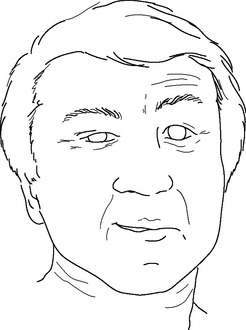Chapter 4 Observation, Chapter 5; Symptoms and Signs, Chapter 55 In acute situations, rigidity of the neck may indicate an invasion of external Wind, in which case it will be accompanied by all the typical manifestations of an exterior invasion such as aversion to cold, fever, headache and a Floating pulse. Both Wind-Cold and Wind-Heat may cause rigidity of the neck but it is more likely to occur with an invasion of Wind-Cold (in fact, it is one of the chief symptoms of invasion of Wind-Cold as listed in the ‘Discussion of Cold-induced Diseases’ – see Bibliography, p. 1067). Another possible acute condition causing stiffness of the neck occurs when external Cold and Dampness invade the muscles of the neck, in which case there is also pronounced neck pain; this is a case of acute Painful Obstruction Syndrome and it is relatively common. Box 4.1 summarizes patterns underlying neck rigidity. Observation, Chapter 5; Symptoms and Signs, Chapter 55 When deviation of eyes and mouth follows a stroke, it is called central facial paralysis in Western medicine, as it arises from the central nervous system. In facial paralysis following Wind-stroke, the nerves above the eyes are not affected, that is, the movement of the eyebrows and furrowing of the forehead are normal. By contrast, in peripheral facial paralysis (Bell’s palsy), the patient will be unable to raise the eyebrow or furrow the forehead on the paralysed side. Figure 4.1 shows the deviation of eye and mouth. Symptoms and signs, Chapter 55 Facial paralysis is characterized by deviation of the mouth, incomplete closure of one eye and inability to grimace, grin, bulge the cheeks, whistle, or raise the eyebrow and furrow the forehead on the affected side (see Plate 4.1 on p. P8).
 OBSERVATION OF BODY MOVEMENTS
OBSERVATION OF BODY MOVEMENTS
HEAD
Tremor of the head
Rigidity of the neck
Clinical significance
FACE
Deviation of eye and mouth
Clinical significance
Facial paralysis (Bell’s palsy)
Observation




